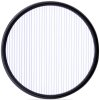So I have some tiny hairline scratches that are in the middle of my lens on my Mini 2 and since not removable easily at least and not really wanting to use a Refresh for this any other options? The lens flares seem to be exaggerated because of this. Too bad can’t simply swap out lens cover but you can’t. Thanks.
You are using an out of date browser. It may not display this or other websites correctly.
You should upgrade or use an alternative browser.
You should upgrade or use an alternative browser.
Scratches on Lens
- Thread starter AtortPhotography
- Start date
D
Deleted member 103366
Guest
I recently dismantled a Mavic Mini camera/gimbal and the outer lens glass (the rectangular piece) was accidentally and easily displaced, I imagine the Mini 2's camera body is similar. If the glass is scratched and you wish to change it I would order one of the pattern? ones that seem readily available on the likes of ebay.
Once you recieve it and verify it is not a piece of junk I would imagine that, with a pin or needle or scalpel, it would be fairly easy to 'dig' the original out of the camera body ( it comes off in the forward direction ) and replace it with the pattern one.
I assume they are glued in, I haven't checked, but I didn't notice any 'click' as it was displaced.
Mini 2 Replacement Lens Cover for sale | eBay
Find great deals on eBay for Mini 2 Replacement Lens Cover. Shop with confidence.
www.ebay.co.uk
I assume they are glued in, I haven't checked, but I didn't notice any 'click' as it was displaced.
Last edited by a moderator:
Pixeldawg
Well-Known Member
I look at drone lenses differently from my normal DSLR equipment, In regard to the DSLR, I never, ever have a filter on the camera. My thinking is s=why would I place a $100 slice of glass in front of multi-thousand dollar lenses? Makes no sense because the optics of that filter will never match the glass within the lens and will degrade the image quality. In 40 years of shooting, I have never had an accident with a lens. I am 56 years old and have a few lenses that I purchased when I was 16 and they are as sharp as ever.
Now, drones in my opinion are different. At the heights and speeds they experience, you can't see small objects that may hit the glass, so a filter is always on my drone, even if it is a clear one. much easier to replace in comparison to the lens itself. The above situation is why I do this, too.
Now, drones in my opinion are different. At the heights and speeds they experience, you can't see small objects that may hit the glass, so a filter is always on my drone, even if it is a clear one. much easier to replace in comparison to the lens itself. The above situation is why I do this, too.
Just seems like a mess to have to glue and not mess up the gimbal while doing all this. Ugh scalpel.I recently dismantled a Mavic Mini camera/gimbal and the outer lens glass (the rectangular piece) was accidentally and easily displaced, I imagine the Mini 2's camera body is similar. If the glass is scratched and you wish to change it I would order one of the pattern? ones that seem readily available on the likes of ebay.
Once you recieve it and verify it is not a piece of junk I would imagine that, with a pin or needle or scalpel, it would be fairly easy to 'dig' the original out of the camera body ( it comes off in the forward direction ) and replace it with the pattern one.Mini 2 Replacement Lens Cover for sale | eBay
Find great deals on eBay for Mini 2 Replacement Lens Cover. Shop with confidence.www.ebay.co.uk
I assume they are glued in, I haven't checked, but I didn't notice any 'click' as it was displaced.
D
Deleted member 103366
Guest
brett8883
Well-Known Member
Ralph thompson
Well-Known Member
I doubt you have a scratched lens. I have cleaned the lens on my drones a few times over the past 10 years but never out of necessity, just as part of a routine check. Lens flare is a normal characteristic of photography. All camera lens' now have coatings that protect the lens, reduce surface reflections and help transmission. The downside is that any light or high contrast shinning directly onto the lens can produce flare. Its become a sexy thing to show in scary movies as brett8883 demonstrates. Nothing you can do about except be mindful of the location of lights and sun. Sometimes just repositioning the camera will reduce or eliminate the flare.
I sent into DJI today I couldn’t live with it too much of a perfectionist.Oh well, I guess you will have to live with the scratches then.
Ralph thompson
Well-Known Member
The white lines on the photograph you attached are not scratches on the lens. Looks as though you had a slow shutter speed and maybe also out of focus. The two long lines are lens flare and the fine lines are actually spots of light that becomes lines because you dragged the shutter and the camera moved. In fact its more of a shake that a movement. Take the photograph again with a higher ISO and higher shutter speed, I think your scratches will disappear.
brett8883
Well-Known Member
It’s actually consistent with what a scratch would do to specular highlights. There’s actually a filter you can get to produce these kinds of streaks (I wasn’t kidding when I said people will pay extra for that look) called a streak filter and it essentially just has scratches or strings across it.The white lines on the photograph you attached are not scratches on the lens. Looks as though you had a slow shutter speed and maybe also out of focus. The two long lines are lens flare and the fine lines are actually spots of light that becomes lines because you dragged the shutter and the camera moved. In fact its more of a shake that a movement. Take the photograph again with a higher ISO and higher shutter speed, I think your scratches will disappear.

Streak filter.

NG Wildman
Well-Known Member
I have one of these for my SLR (c. 1981) with 2 such lenses and adjustment nubs that can be moved to produce any angle of (light) lines in any direction. This looks interesting on X-mas lights, trees etc.It’s actually consistent with what a scratch would do to specular highlights. There’s actually a filter you can get to produce these kinds of streaks (I wasn’t kidding when I said people will pay extra for that look) called a streak filter and it essentially just has scratches or strings across it.
View attachment 140561
Streak filter.
View attachment 140562
Pixeldawg
Well-Known Member
There is a software called "Thomas Knoll's Light Factory" that you can produce any kind of lens flair you want. A bit pricy, but when you need it, you need it.It’s actually consistent with what a scratch would do to specular highlights. There’s actually a filter you can get to produce these kinds of streaks (I wasn’t kidding when I said people will pay extra for that look) called a streak filter and it essentially just has scratches or strings across it.
View attachment 140561
Streak filter.
View attachment 140562
brett8883
Well-Known Member
Yea but realistically doing that to video wouldn’t be worth it because you’d have to track the flares to the video and still wouldn’t look as natural. With the filter you get it perfect every timeThere is a software called "Thomas Knoll's Light Factory" that you can produce any kind of lens flair you want. A bit pricy, but when you need it, you need it.
Pixeldawg
Well-Known Member
You could actually use this and animate it as well in After effects.Yea but realistically doing that to video wouldn’t be worth it because you’d have to track the flares to the video and still wouldn’t look as natural. With the filter you get it perfect every time
brett8883
Well-Known Member
It would be extremely difficult to make it look convincing and why would you when you could just pop on a filterYou could actually use this and animate it as well in After effects.
Pixeldawg
Well-Known Member
Because several reasons... Filters often cause image degradation because the overall quality of them is lesser than the glass within your lens, and the more you add, the worse it gets. In my media classes, we have done this regularly with good success. And then there's the "what happens if I don't have the filter with me?" question. There are a host of reasons for this and many of those nice flare scenes that you see in the movies and on TV are often added in. In reading your responses, I get the impression that you feel like you would have to do this for each and every frame, and that's not how After Effects works. It can track the same object through the entire shot quite easily. I admire you being somewhat of a purist, but more than one way to skin a cat (With apologies to my cat, Houdini for saying that...)
Cordially,
Mark
Cordially,
Mark
brett8883
Well-Known Member
I know After Effects well and I’m not doubting it could be done but that would be the method of last resort. That’s not the method you would want to use if you have other ways of doing it.Because several reasons... Filters often cause image degradation because the overall quality of them is lesser than the glass within your lens, and the more you add, the worse it gets. In my media classes, we have done this regularly with good success. And then there's the "what happens if I don't have the filter with me?" question. There are a host of reasons for this and many of those nice flare scenes that you see in the movies and on TV are often added in. In reading your responses, I get the impression that you feel like you would have to do this for each and every frame, and that's not how After Effects works. It can track the same object through the entire shot quite easily. I admire you being somewhat of a purist, but more than one way to skin a cat (With apologies to my cat, Houdini for saying that...)
Cordially,
Mark
I did recently see a Netflix show, I think it was the Witcher but I can’t be sure, where they had beautiful cinematography using anamorphic lenses for the entire series but for whatever reason in this one scene they very clearly were not using anamorphic lenses but added a streak in anyway and I noticed it right away. I’m sure 99% of people would never notice but to me it was extremely jarring and I felt they should have just left that out.
Last edited:
Similar threads
- Replies
- 8
- Views
- 3K
- Replies
- 7
- Views
- 912
- Replies
- 15
- Views
- 6K
- Replies
- 7
- Views
- 2K
DJI Drone Deals
New Threads
-
-
Last Week's Most Popular Topics (January 10, 2026)
- Started by msinger
- Replies: 0
-
Mavic 4 bought in Japan, currently in US, and needs warranty repair. What are my options?
- Started by Theoriginalgregtoo
- Replies: 8
-
-












